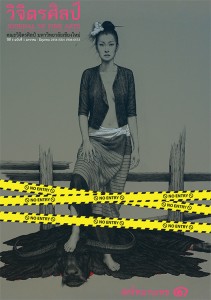การเปลี่ยนความหมายของ การสังคายนาพระไตรปิฎกครั้งที่ 8 ในสมัยรัชกาลที่ 1 ถึงรัชกาลที่ 5 แห่งกรุงรัตนโกสินทร์
Main Article Content
Abstract
อย่างไรก็ตาม การสังคายนาพระไตรปิฎกครั้งที่ 8 ที่ดูจะมีความสำคัญในเอกสารของรัตนโกสินทร์นั้นกลับมิได้รับความสำคัญมากนักในตำนานทางศาสนาของล้านนา โดยตำนานทางศาสนาเล่มสำคัญอย่างชินกาลมาลีปกรณ์มองว่าเป็นแค่การชำระอักษรเท่านั้น บทความนี้ได้วิเคราะห์ปรากฏการณ์ดังกล่าวเพื่อแสดงให้เห็นถึงการเปลี่ยนความหมายของการสังคายนาพระไตรปิฎกที่สัมพันธ์กับมุมมองทางศาสนาของชนชั้นนำในสมัยรัตนโกสินทร์
Alteration of Meaning of 8th Tipitaka 's Sangayana in the Reign of King Rama I, Rattanakosin Period.
In our present understanding, the Buddhist Councils or the Sangayana of Tipitaka (The councils set up for revising the Buddhist Scriptures of Tipitaka) has been held in Siam twice. The first one is the Eighth Sangayana (2020 B.E.), held during the era of King Tilokkaraj of the Lan Na Kingdom; while the second one is the Ninth Sangayana (2331 B.E.), held during the era of King Rama I of the Rattanakosin Kingdom. In Buddhist perspective, the Sangayana is deemed as a very important event because it is an event that signifies the power and virtues of the rulers who initiate it.
What is striking is why an account of such an important event in the eyes of Rattanakosin people, which they perceive as the Eighth Sangayana, is absent from its contemporary Lan Na's Buddhist Chronicles. Instead, it appears abundantly in the Chronicles and Buddhist Chronicles of the Rattanakosin period. Here, I take this incident as a starting point of analysis. I propose that the phenomenon reflects how the meaning of the Sangayana of Tipitaka has been changed according to the changing perspective on religion of the rulers of Rattanakosin the period.


